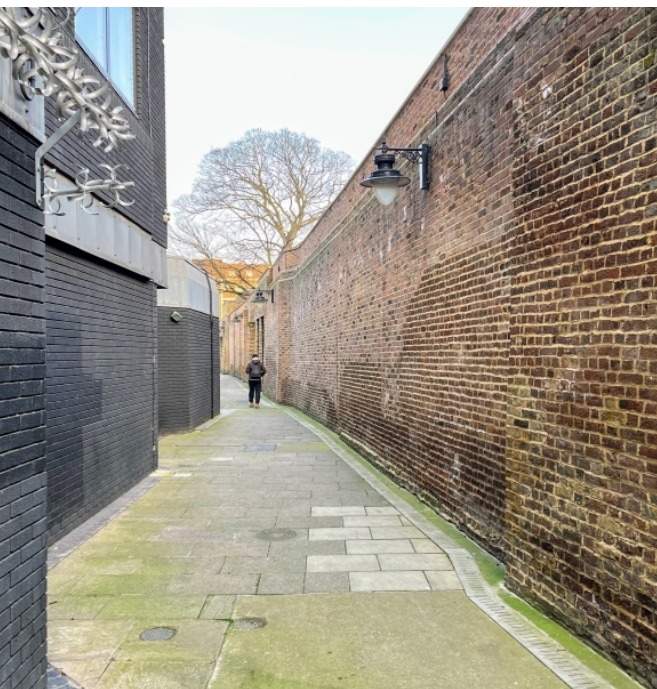London is littered with prisons past, reminders of which remain if you know where to seek them among today’s modern city.
Just off Borough High Street, along Angel Place there’s an alleyway with a large brick wall on your right, the last remaining vestige of Marshalsea prison.
Open between 1373 and 1842 in Southwark, south of the River Thames. Marshalsea housed med accused of crimes at sea, political figures charged with sedition (speech inciting people to rebel against authority of a state or monarch) and the poorest of London’s debtors.
England’s prisons were private at this time and operated at a profit. This one looked like an Oxbridge college that functioned as an extortion racket. Debtors affording the 18th century prison fees enjoyed access to a shop, restaurant and a bar and crucially were allowed out during the daytime, allowing time to earn money for their creditors.
Those not affording privileges were crammed into one of nine small rooms with dozens of others, for many years, usually for modest debts which accumulated as prison fees went unpaid.
The poor faced starvation. Those that crossed their jailers were tortured.
Charles Dickens’ father was sent to Marshalsea when the future author was just twelve years old for his debt to a Baker. This is portrayed in his works, through various characters. An example is Amy Dorrit, whose father was sent to Marshalsea with such complex debt they couldn’t work out how to get him free.
A library now stands on the site, all that remains is a long brick wall that marked it southern boundary.
